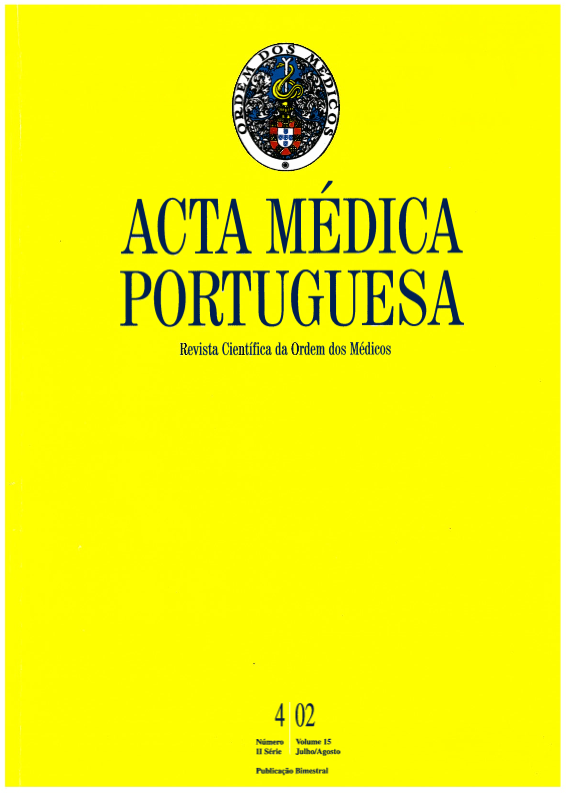Síndroma nefrótico corticorresistente.
DOI:
https://doi.org/10.20344/amp.1958Resumo
The authors present a case report on a eighteenth months old male white, who was admitted at the Nephrology Unit with nephrotic syndrome--first episode. Considering the age of the patient, the laboratorial results and the negative result of the immunologic study, the first diagnostic hypothesis was the minimal lesions nephrotic syndrome and was initiated treatment with corticosteroid in the dosis of 60 mg per square meter, per day. The generalized oedema and the massive proteinuria persisted although the corticosteroid and additional therapy. At the sixth week the renal biopsy revealed membranous glomerulonephropathy with mesangial deposits of IgG, IgA, IgM, C3, C4, C1q, compatible with an immunologic disease and suggestive of lupus nephritis. Then, was initiated the therapeutic protocol with 6 menstrual pulses of intravenous cyclophosphmide. After the 4th pulse of cyclophosphamide the proteinuria was negative, and the patient remains in clinical and laboratorial remission since the end of the 6 pulses, and after 14 months of follow-up.Downloads
Downloads
Como Citar
Edição
Secção
Licença
Todos os artigos publicados na AMP são de acesso aberto e cumprem os requisitos das agências de financiamento ou instituições académicas. Relativamente à utilização por terceiros a AMP rege-se pelos termos da licença Creative Commons ‘Atribuição – Uso Não-Comercial – (CC-BY-NC)’.
É da responsabilidade do autor obter permissão para reproduzir figuras, tabelas, etc., de outras publicações. Após a aceitação de um artigo, os autores serão convidados a preencher uma “Declaração de Responsabilidade Autoral e Partilha de Direitos de Autor “(http://www.actamedicaportuguesa.com/info/AMP-NormasPublicacao.pdf) e a “Declaração de Potenciais Conflitos de Interesse” (http://www.icmje.org/conflicts-of-interest) do ICMJE. Será enviado um e-mail ao autor correspondente, confirmando a receção do manuscrito.
Após a publicação, os autores ficam autorizados a disponibilizar os seus artigos em repositórios das suas instituições de origem, desde que mencionem sempre onde foram publicados e de acordo com a licença Creative Commons









